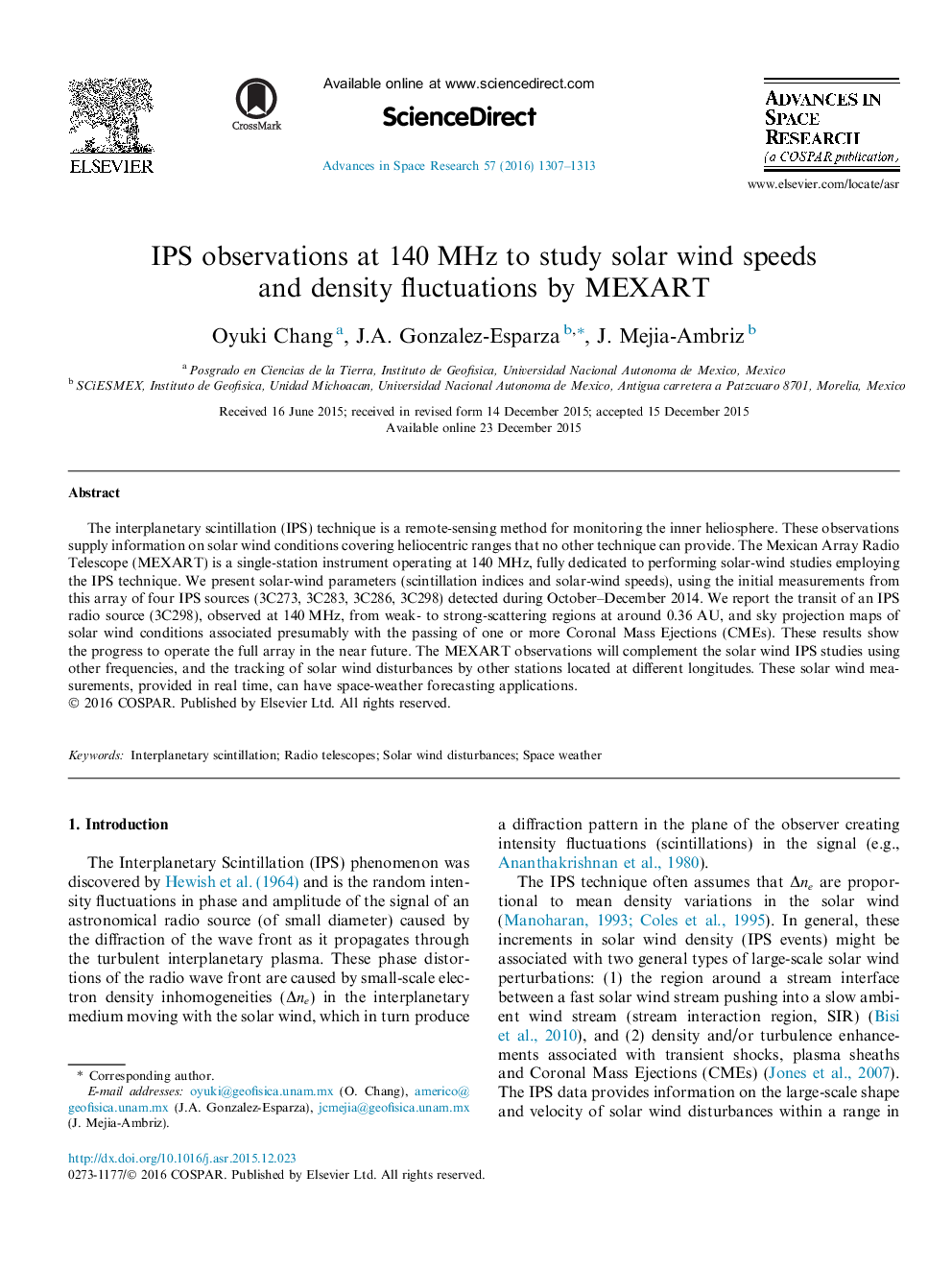| Article ID | Journal | Published Year | Pages | File Type |
|---|---|---|---|---|
| 1763670 | Advances in Space Research | 2016 | 7 Pages |
Abstract
The interplanetary scintillation (IPS) technique is a remote-sensing method for monitoring the inner heliosphere. These observations supply information on solar wind conditions covering heliocentric ranges that no other technique can provide. The Mexican Array Radio Telescope (MEXART) is a single-station instrument operating at 140Â MHz, fully dedicated to performing solar-wind studies employing the IPS technique. We present solar-wind parameters (scintillation indices and solar-wind speeds), using the initial measurements from this array of four IPS sources (3C273, 3C283, 3C286, 3C298) detected during October-December 2014. We report the transit of an IPS radio source (3C298), observed at 140Â MHz, from weak- to strong-scattering regions at around 0.36 AU, and sky projection maps of solar wind conditions associated presumably with the passing of one or more Coronal Mass Ejections (CMEs). These results show the progress to operate the full array in the near future. The MEXART observations will complement the solar wind IPS studies using other frequencies, and the tracking of solar wind disturbances by other stations located at different longitudes. These solar wind measurements, provided in real time, can have space-weather forecasting applications.
Related Topics
Physical Sciences and Engineering
Earth and Planetary Sciences
Space and Planetary Science
Authors
Oyuki Chang, J.A. Gonzalez-Esparza, J. Mejia-Ambriz,
